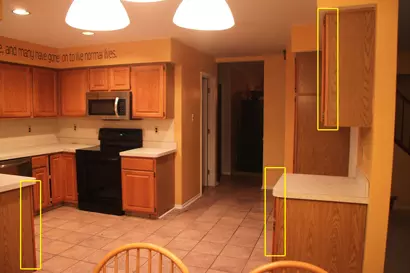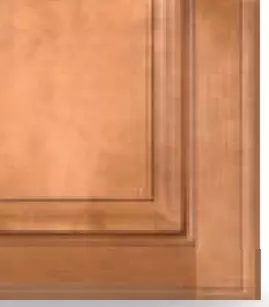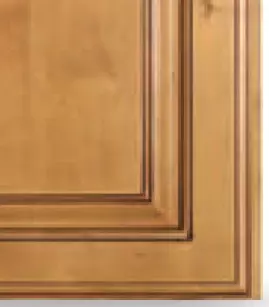CHOOSING A FINISH
Deciding on what finish to use can mean the difference between a typical kitchen and your dream kitchen.
Painted – Painted finishes offer a wide variety of advantages over stained finishes. Ease of maintenance and cleaning, as well as the finish not darkening over time like some stained finishes, will keep your new kitchen looking new, longer. The down side to painted finishes is that the finish may crack in some areas like mitered corners. Real wood cabinets expand and contract with the change in humidity due to the wood absorbing moisture and then releasing it when the humidity goes back down. Over time, this expanding and contracting can cause the seams to crack slightly.

No Glaze

Glaze

Glaze – Glazes are applied to doors and moldings to enhance the contours. The example to the left shows the Bristol Toffee door (Left) and the Bristol Toffee Glaze (Right). The doors are identical and have the same finish, but once the glaze is applied, the doors take on an entirely different look.